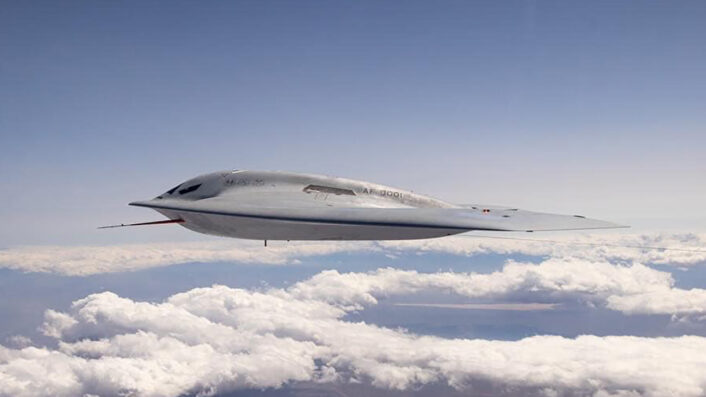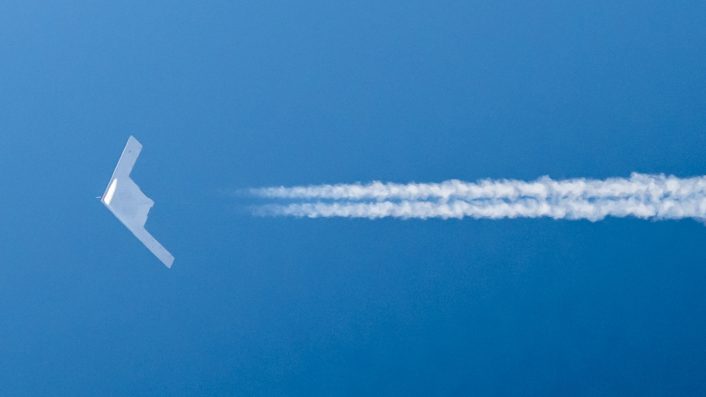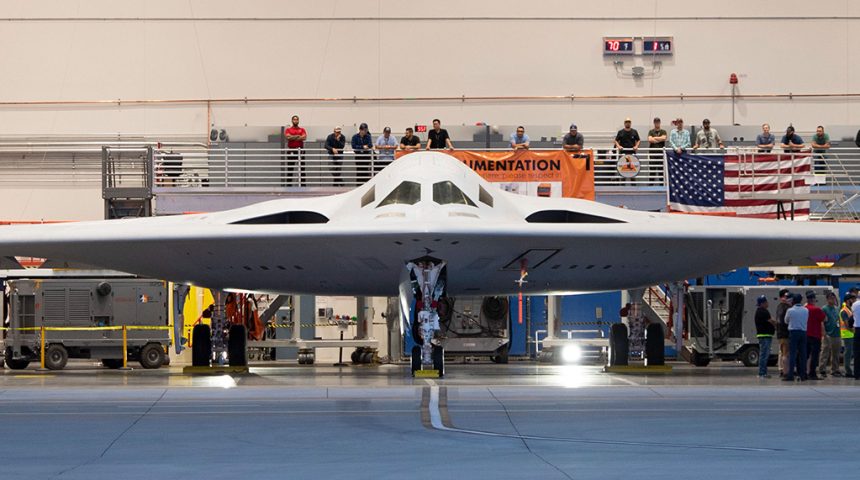The insanely costly B-21 Raider program is apparently becoming less expensive, with the projected cost for the first five production lots dropping from $19.1 billion to $13.1 billion, a 28% reduction, amounting to $5.1 billion in savings.
In recent years the public has become more and more accustomed to military programs becoming costlier as they move forward. However, it now appears that the trend is now the opposite for the new B-21 Raider, as it is becoming less expensive, according to the budget.
In fact, in a rare instance for a defense acquisition program, as reported by Aviation Week, the B-21 budget for the first five production lots went from the $19.1 billion budgeted by the U.S. Air Force in 2023 to the $13.8 billion budgeted for 2025. The decrease amounts to a 28% discount, or $5.1 billion, for the same number of bombers to be acquired between 2023 and 2027.
While the future lots of the Low-Rate Initial Production (LRIP) are still to be negotiated, the decrease of the cost could allow to boost the production with an increase of the orders. In fact, according to Northrop Grumman’s CEO Kathy Warden, the savings could allow to potentially add dozens of B-21s to the last three years of the LRIP phase.
Furthermore, Aviation Week says that official information released so far, although scarce, suggests early-production B-21s are at least tens of millions of dollars less expensive than the Air Force expected. The maximum unit price set for the B-21 when the program was launched in 2010 was $550 million, later reduced to $511 million in 2015 when Northrop Grumman was awarded the development contract.
That price has then to be converted to 2024 dollars to adjust for inflation, obtaining the current reported cost of $730 million. With the decrease of the cost, Aviation Week says the first 21 B-21s might now cost “only” $668 million per bomber.
Last year the Air Force said that the price of each aircraft has been renegotiated with Northrop Grumman, however it’s not clear how much this influenced the new budget, even if it was said that the price decreased. By the end of the year there might be the signing of the contract for the second production lot, however no further price changes are expected.
It is still to be seen, however, if the saved funds will be used to boost the B-21’s production. In fact, the Air Force deliberately chose to have a slow production for the B-21 to make it resilient to variations caused by cost overruns and budget caps, avoiding problems similar to the ones of the F-35’s production.

Expanded role for the B-21
In recent remarks at the Military Reporters and Editors conference in October 2024, Gen. David W. Allvin suggested that the B-21’s mission scope could expand. With the costly NGAD (Next Generation Air Dominance) program, estimated at $300 million per manned unit, under review, the Air Force is exploring the Raider’s potential as an air dominance platform in addition to its primary role in strategic strikes.
The Air Force Chief did not explicitly confirm an air-to-air role for the B-21; however, he hinted at this possibility. “We have not taken that off the table,” Allvin said. The same possibility was also implied in 2019 by Air Force officials while talking about future air dominance.
“A B-21 that also has air-to-air capabilities” and the ability “to work with the family of systems to defend itself, utilizing stealth – maybe that’s where the sixth-generation airplane comes from,” said then Maj. Gen. Scott Pleus, at the time the Pacific Air Forces Director of Air and Cyber Operations.
If adapted for an air-to-air role, the B-21 could serve as a powerful “arsenal plane,” carrying long-range missiles like the secretive AIM-260 Joint Advanced Tactical Missile (JATM) to deter or neutralize enemy formations. This would leverage the B-21’s stealth and data-linking capabilities, allowing it to operate effectively alongside CCAs and manned NGAD aircraft.
A role in Suppression of Enemy Air Defenses (SEAD) and Destruction of Enemy Air Defenses (DEAD) missions, using anti-radiation missiles or deploying decoys to lure enemy radar, is also being discussed. Its sophisticated sensor fusion and digital architecture allow the Raider to process and respond to complex electromagnetic data, positioning it as a versatile tool for a range of missions. Additionally, reports suggest that its onboard power generation capabilities are robust, further enhancing its potential for SEAD/DEAD operations.

Larger fleet
While many are also advocating for a larger B-21 fleet, Allvin did not mention further acquisitions of the bomber. The service is, in fact, sticking to the original procurement plan of 100 aircraft which, at the rate they’re being manufactured, won’t be completed until the mid-to-late 2030s.
Northrop Grumman CEO Kathy Warden also commented that the service might be looking at reconsidering the final number of the bombers. In fact, Air Force Secretary Frank Kendall said that the service is looking at options to increase the force size as part of the force structure design review.
The Secretary has specifically mentioned NGAD, however Warden said the B-21 “is in the mix as well.” “It would be premature for me to suggest where that force structure review will end up,” said Warden. “But I do think in the coming months, we may get a better indication from the Air Force as to how they’re thinking about B-21 quantities in the long run.”
The coming months may reveal whether the Air Force decides to officially expand the B-21’s role. As discussions regarding the NGAD’s future progress, Northrop Grumman’s Kathy Warden has confirmed the company’s readiness to scale up production if more Raiders are required.
While Secretary of the Air Force Frank Kendall has noted that ongoing assessments could impact the final number of bombers, any extension of the Raider’s mission could strengthen its importance in the U.S. arsenal, ensuring it remains a cornerstone of strategic air power for years to come.









